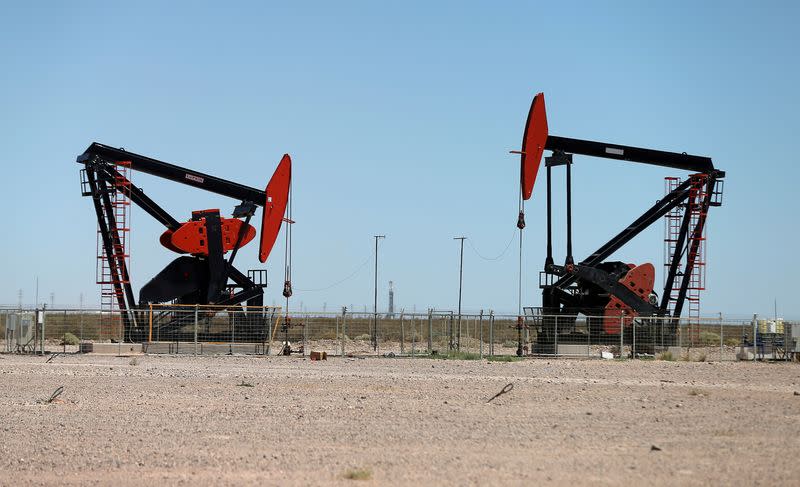Oil settles down more than $5 as US data shows weak demand for gasoline

By Laura Sanicola
(Reuters) -Oil prices settled down more than $5 on Wednesday as fuel demand destruction and a bleaker macroeconomic picture took centre stage in the day's trade.
Brent crude oil futures settled down 5.11, or 5.6%, to $85.81 a barrel while U.S. West Texas Intermediate crude (WTI) fell $5.01, or 5.6%, to $84.22.
At their session lows, both benchmarks were down by more than $5, and heating oil and gasoline futures also fell by more than 5%. Crude oil prices have fallen by about $10 since last week's settlement.
Finished motor gasoline supplied, a proxy for demand, fell last week to about 8 million bpd, its lowest since the start of this year, the U.S. Energy Information Administration (EIA) reported Wednesday.
Some of that demand destruction could be due to torrential rains which brought flooding to New York last Friday and post-tropical storm Ophelia, which doused the Northeast with torrential downpours in late September, said Bob Yawger, director of energy futures at Mizuho.
Seasonally, U.S. gasoline consumption is at the lowest level in 22 years, according to commodity analysts at JP Morgan.
A 30% spike in fuel prices in the third quarter of this year depressed demand, resulting in a counter seasonal plunge of 223,000 barrels per day, the analysts wrote in a Wednesday note.
Gasoline stocks rose by 6.5 million barrels, far exceeding expectations of a 200,000-barrel rise.
U.S. nationwide crude stocks fell by 2.2 million barrels to 414.1 million barrels in the week to Sept. 29, but stocks at Cushing, Oklahoma, the WTI delivery hub, rose for the first time in eight weeks.
Saudi Arabia's energy ministry confirmed it will continue its voluntary 1 million barrel per day (bpd) crude supply cut until year end, while Russia said it will continue its 300,000 bpd crude export cuts, and in November will review its voluntary 500,000 bpd output cut set in April.
But crack spreads, a proxy for refining margins, fell below $20 a barrel on Wednesday to the lowest level in about 1.5 years.
This margin "freefall" indicates high prices and interest rates are curtailing crude inventory purchases and increasing odds of a recession, said Jim Ritterbusch, president of Ritterbusch and Associates in Galena, Illinois.
"This could force further demand weakness that the Saudis and Russia may be unable to counter via additional production cuts," Ritterbusch said.
Economic news also pressured oil prices. Growth in the U.S. services sector slowed in September, data showed.
The daily Kommersant reported that Russia could be ready to ease its diesel ban in coming days, citing unidentified sources.
The OPEC+ Joint Ministerial Monitoring Committee (JMMC) online meeting kept the group's output policy unchanged.
Oil markets are heading in the "right direction" by balancing supply and demand, Kuwait's oil minister Saad Al Barrak said, according to state media agency KUNA.
Russian Deputy Prime Minister Alexander Novak said the Saudi and Russian cuts have helped to balance oil markets, and said the domestic market benefited from the Kremlin's diesel and gasoline export ban.
(Reporting by Robert Harvey, Laura Sanicola and Muyu Xu; Editing by Mark Potter, Louise Heavens, Nick Macfie and David Gregorio)

 Yahoo Finance
Yahoo Finance 